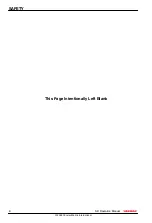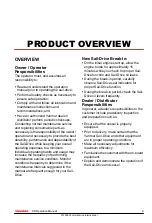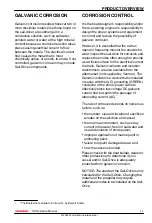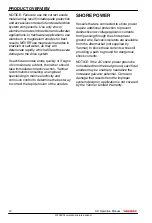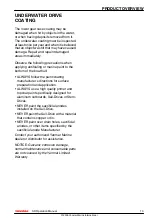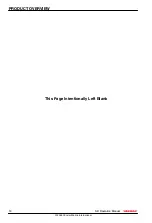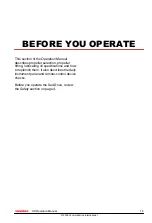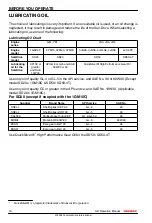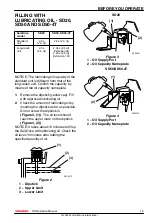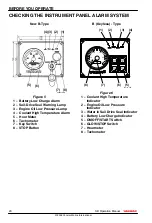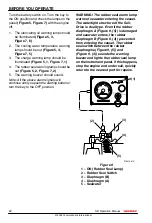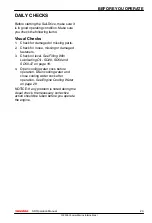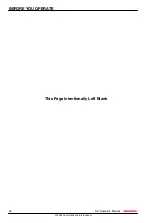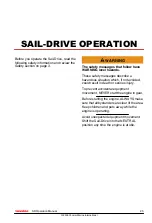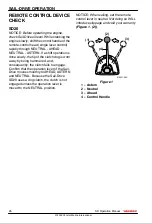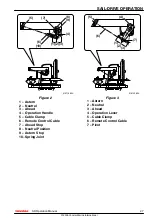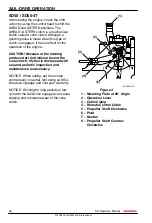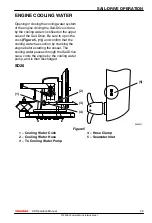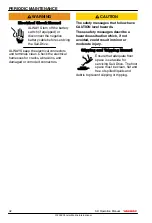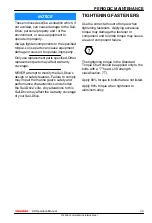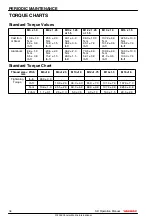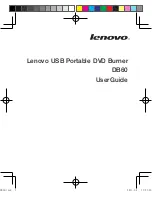
Turn the battery switch on. Turn the key to
the ON position and check the lamps on the
panel (Figure 5, Figure 7) with the engine
off:
1. The lubricating oil warning lamp should
be illuminated (Figure 5, 3,
2. The cooling water temperature warning
lamp should be out (Figure 5, 4,
3. The charge warning lamp should be
illuminated (Figure 5, 1, Figure 7, 1) .
4. The rubber seal warning lamp should be
out (Figure 5, 2, Figure 7, 2) .
5. The warning buzzer should sound.
Note: All the above alarm signals will
continue until you push the starting button or
turn the key to the OFF position.
WARNING! The rubber seal alarm lamp
warns of seawater entering the vessel.
The watertight structure of the Sail-
Drive is dual type. Even if the rubber
diaphragm A (Figure 9, (5)) is damaged
and seawater enters, the rubber
diaphragm B (Figure 9, (4)) prevents it
from entering the vessel. The rubber
seal switch between the rubber
diaphragms (Figure 9, (5)) and
(Figure 9, (4)) sounds the warning
buzzer and lights the rubber seal lamp
on the instrument panel. If this happens,
stop the engine and under sail, quickly
return to the nearest port for repairs.
(2)
(3)
(1)
(4)
(5)
019410-01X
Figure 9
1 – ON (Rubber Seal Lamp)
2 – Rubber Seal Switch
3 – Diaphragm (B)
4 – Diaphragm (A)
5 – Seawater
BEFORE YOU OPERATE
22
SD Operation Manual
© 2009 Yanmar Marine International

